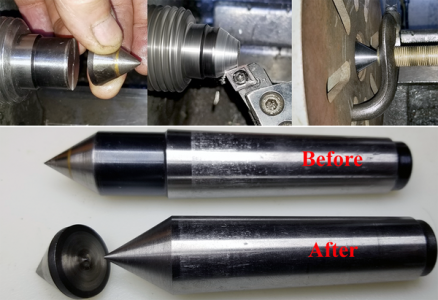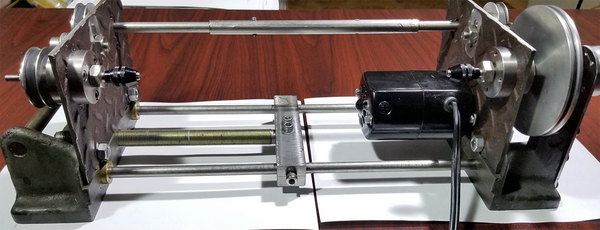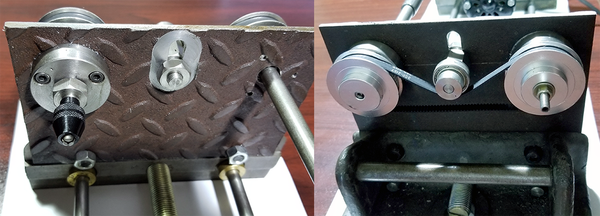- Joined
- Apr 5, 2015
- Messages
- 23
Unfortunately for me, I didn't know the difference between Headstock center and Tailstock center and all I have, are the hardened Tailstock centers. I have one, where carbide tip has broke. I'm going to try to grind about 30mm of the tip and turn it as it is. If it gives. If not, I will heat it up with oxy-acetylene torch to make it soft. Heck I might even harden it back again, when I'm done. And NO. I don't have a tool post grinder. That would have been very handy, wouldn't it? I just tried using a file on the blacken portion of my center. If I can file it, I can turn it.Headstock centers are generally left soft so that they can be trued up with a cutting tool when necessary; often they are marked with a groove near the 60 degree point so they can be identified versus the tailstock center which is always hard. It is a good idea to stamp the end of the spindle and the center with reference marks so that they can be replaced in the same orientation each time they are used so that they tend to run true at each use..

That is a philosophical question. I want my piece of work, to be true, even when I flip it around. I don't know any other way of doing it, other then between centers. And I don't like turning it between centers without a dog, because you know, what happens to carbide inserts, when work stops turning, while it is still engaged. Quite frankly, I was hoping, that you guys would just suggest where I can find a stubby MT3 center. But looks like it doesn't exist.Who has used a dead center in the tailstock for several dog's ages? We used them in high school machine shop class in 1963, but not since then other than on cylindrical grinders.
Last edited:


 Piece of cake. And YES, I did use some sand papor to make it look pretty. Don't we all?
Piece of cake. And YES, I did use some sand papor to make it look pretty. Don't we all? 



